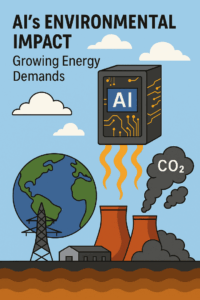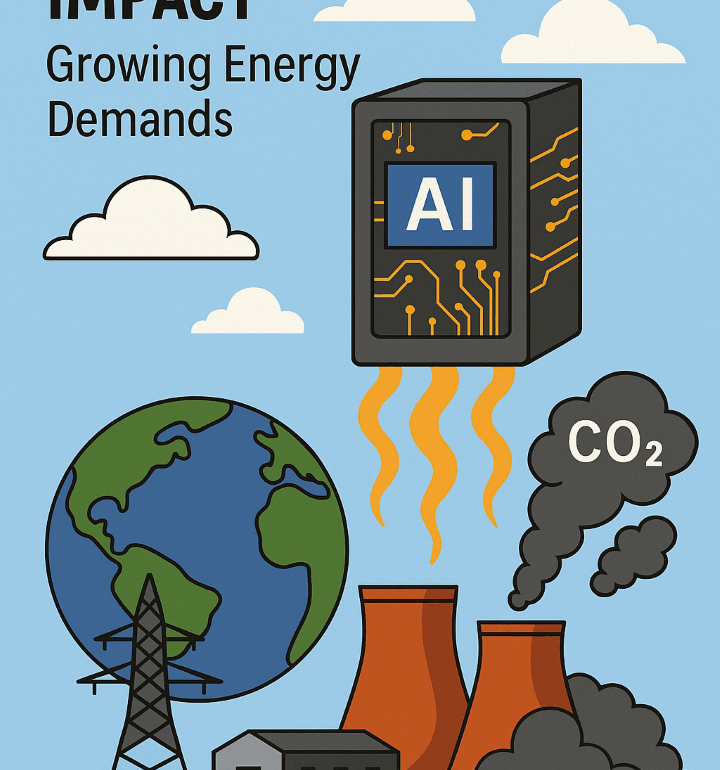
As AI use grows, the environmental footprint of data centers and compute-intensive models raises global concern.
AI’s Environmental Impact Sparks IMF Warning
In a recent Axios General AI newsletter report, the IMF cautioned that rapid AI expansion—especially generative AI models trained on vast computational infrastructure—poses a significant threat to energy efficiency and climate goals. The organization has identified AI as a double-edged sword: an economic growth driver and a climate stressor.
Data centers supporting large language models (LLMs) and inference engines require tremendous amounts of electricity and cooling. Some projections estimate that AI data centers could consume up to 3% of the world’s electricity by 2030, rivaling aviation in terms of carbon footprint.
Global Energy Policy at a Crossroads
While governments have ramped up AI investment, there is growing debate about the environmental trade-offs. The IMF urges national regulators to create incentives for sustainable AI practices, including carbon-neutral computing, renewable data infrastructure, and hardware efficiency standards.
Moreover, the report encourages deeper collaboration between AI developers, data center operators, and climate policy stakeholders. This includes applying AI itself to monitor and optimize energy usage within its own operational pipelines.
Is Green AI the Solution?
Experts point to “Green AI” practices—such as model pruning, energy-efficient chip design, and workload scheduling—as potential solutions. However, these approaches are not yet widely adopted, particularly among frontier AI labs racing to produce ever-larger foundation models.
The IMF’s analysis suggests that without clear guidelines, the AI industry may outpace environmental safeguards, leading to long-term sustainability risks that outweigh short-term benefits.
Conclusion: Sustainable AI Is Not Optional
AI’s environmental impact is no longer a side note—it is central to the future of responsible innovation. Policymakers, enterprises, and developers must now consider how to scale AI sustainably or risk eroding progress in the climate fight.
Source: Axios. (2025, April 18). IMF Warns AI’s Energy Use Threatens Climate Goals. https://www.axios.com/newsletters/axios-generative-ai-65f1dfcd-175e-4910-babc-d2b5530e4ea3.html









